Changing Winds: Emerging Wind Turbine Technologies
The post Changing Winds: Emerging Wind Turbine Technologies appeared first on POWER Magazine.
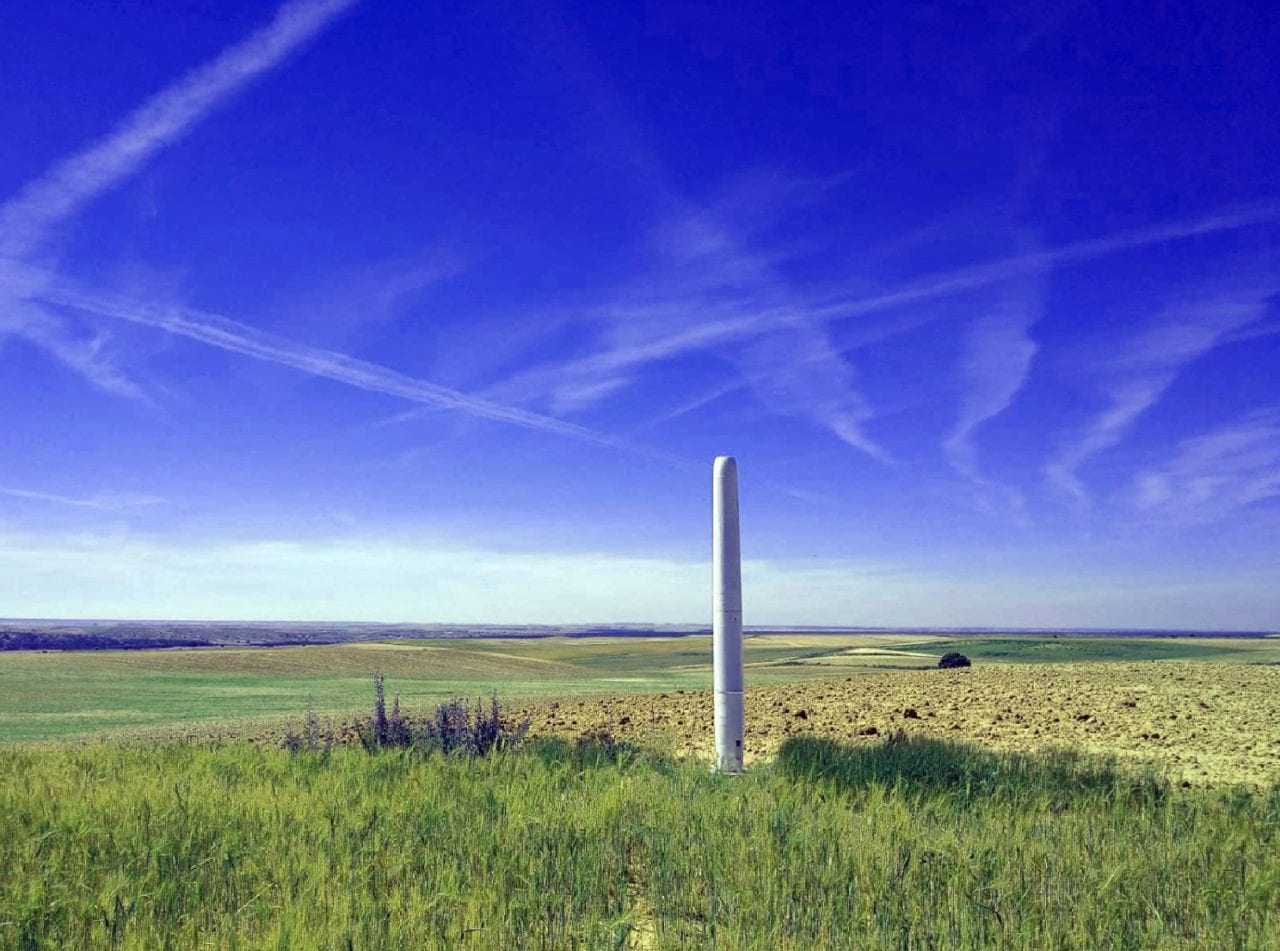
Wind turbine technology continues to evolve under new market demands-as well as an urgency to expand to further decarbonization.
Ten years ago, POWER published a comprehensive article exploring the emergence of novel-and sometimes plain wacky-designs" that were then thought of as viable alternatives to the ubiquitous three-bladed wind turbine design. In 2011, to be fair, wind power was just beginning to make its mark on energy markets. But as the Global Wind Energy Council (GWEC) had then noted, its future widespread uptake was still uncertain owing to concerns about its competitiveness against generation from coal, nuclear, and new sources of cheap" gas, as well as an assault on existing price mechanisms" in many markets that were pegged to the credit crisis and government budget shortfalls. However, the stunning growth of installed wind power over the past decade globally-from 238 GW in 2011 to 743 GW in 2020, according to GWEC-has transformed wind power into a mature and mainstream energy source that is cost-competitive with new coal and gas plants.
Still, in its March-released 2021 Global Wind Report, GWEC suggests the world will need a trebling in the volume of wind energy projects worldwide over the next decade to meet global climate challenges. The sector's growth, though, faces an assortment of new challenges, including structural barriers, such as energy access shortfalls and affordability gaps.
The supply chain, too, will need a shakeup. The number of wind turbine suppliers, GWEC's Market Intelligence arm notes, has declined from 63 original equipment manufacturers (OEMs) in 2013 to 33 OEMs in 2019. Today, the top six turbine suppliers now control nearly three-quarters of the global market," it says.
Market consolidation has also affected the gearbox segment, where less than half of suppliers operational eight years ago remain active," as well as the blades segment, where the number of independent and small and medium-sized enterprise (SME) suppliers has dwindled due to inability to compete on cost, research and development investment, and market coverage." Today, GWEC notes, 10 blade producers account for 80% of the total global blade supply. Meanwhile, among other crucial challenges it highlights are a heightened competition for terrain, rare earths [minerals], and technology," all of which could raise the risk of price volatility and trade tensions."
The Case for a New, Integrated ApproachInnovation will be key to address these issues, but technology advancements to meet future demand and functionality won't be easy without a new or integrated approach to all aspects of the wind turbine, some experts say. As pointed out by 21 experts from European and U.S. public and private energy research institutions in a landmark paper published in the journal Science in October 2019, one significant barrier to future wind technology innovation ironically stems from the extent of progress that has been achieved already."
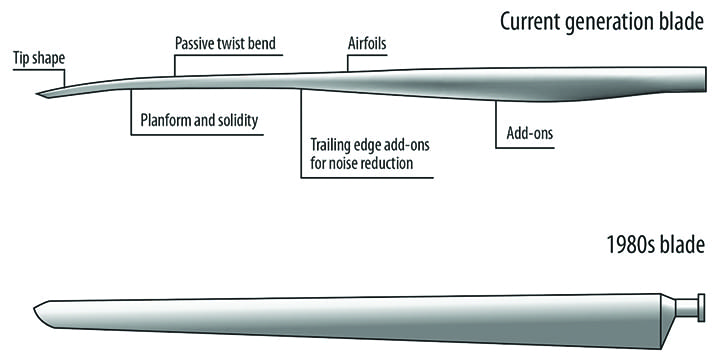 |
1. Wind turbine innovation comparing a modern commercial blade (top) and a commercial blade from the mid-1980s (bottom), which are scaled to the same length. Source: National Renewable Energy Laboratory |
Owing to decades of refinement, a modern blade (Figure 1) is far more sophisticated in aerodynamic design, use of materials, manufacturing process, and structure than ever before, and has fundamentally different features than other aerodynamic applications such as airplane wings," the experts wrote. Some key innovations include higher tip speeds to reduce torque and minimize drivetrain weight; higher speed and high-lift airfoils for a more slender, lighter blade; and innovative tip shapes to mitigate noise. Innovations over time have led to modern blades that are 90% lighter than the 1980s blade would be if simply scaled to current lengths," they noted.
Among examples of notable recent breakthroughs are aeroelastic tailoring, which passively reduces the loads through coupling blade bending and twist"; thicker flat-back airfoils, which enable improved aerodynamic performance from the load-bearing section near the hub; and add-ons such as vortex generators and flow fences; as well as a variety of manufacturing improvements.
However, continued wind technology innovation in this respect is limited, partly because it is challenged by classical problems," the experts said. To make wider progress, more will need to be done, for example, to better understand the atmospheric physics in the regions where taller turbines will operate, as well as the materials constraints associated with the scale-up, they said.
VAWTs, HAWTs, and DAWTsToday's conventional wind turbine market is nearly exclusively dominated by horizontal-axis wind turbines (HAWTs), and OEMs continue to make them bigger to reap economies of scale. Citing a recent research survey, the U.S. Department of Energy (DOE) this April suggested that wind turbines will be two to three times larger by 2035, with a median of 5.5 MW for land-based turbines, and 17 MW for offshore turbines. That in turn will drive substantial cost declines of between 35% and 50% by 2050 for both land-based and offshore wind installations, it said.
However, in a recent paper published in the journal Renewable Energy, experts from Oxford Brookes University in England, argue that traditional propeller-type HAWT wind farms have a major flaw. As the wind approaches the front row of turbines, turbulence will be generated downstream. The turbulence is detrimental to the performance of the subsequent rows," said lead author of the report Joachim Toftegaard Hansen. In other words, the front row will convert about half the kinetic energy of the wind into electricity, whereas for the back row, that number is down to 25-30%."
The research led by Professor Iakovos Tzanakis at the public research university's School of Engineering, Computing and Mathematics (ECM) scrutinized 11,500 hours of computer simulation. It showed, essentially, that if HAWTs were replaced with large-scale vertical-axis wind turbines (VAWTs) at a turbine diameter (Reynolds number 1.35 107), VAWTs exhibited a 15% increase in power output compared to operating in isolation, specifically when the second rotor was spaced three turbine diameters downstream and at an angle of 60 degrees to the wind direction. If positioned in a series, the power output was even greater, by about 3%.
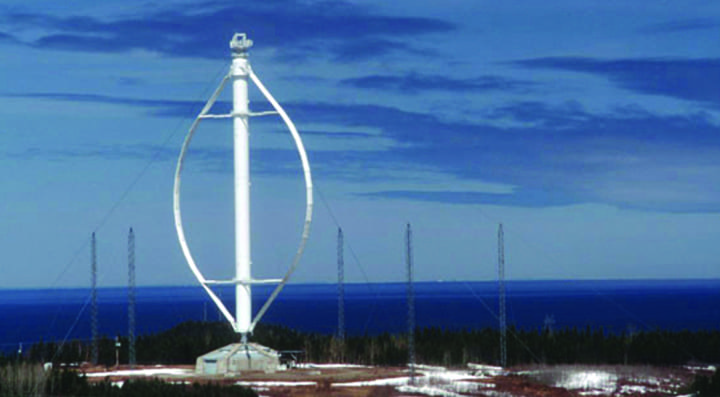 |
2. EOLE, a 3.8-MW Darrieus turbine with a total height of 110 meters, is the largest vertical-axis wind turbine (VAWT) ever constructed. The turbine, built in Cap-Chat, Quebec, had a rotating mass of 880 metric tons. It operated for 18,550 hours between 1987 and 1993. It was shut down due to a failure of the bottom bearing. Courtesy: Paul Gipe/Wind-Works.org |
The study is notable because though several VAWT projects (mostly involving Darrieus turbines in North America and H-rotors in Europe) have been built since the 1970s (Figure 2), many prototypes had terminal failures or problems with metal fatigue and durability. But according to Erik Mollerstrom from the Rydberg Laboratory for Applied Sciences at Halmstad University, VAWTs have also generally suffered a lack of long-term interest from governmental or private funders. Meanwhile, the Oxford Brookes study acknowledges that VAWTs offer an efficiency of 35% to 40% in isolation. A HAWT's, by comparison, is close to 50%. Yet another challenge is that some VAWT designs with a low starting torque require external power to accelerate the turbine at small angular velocities to its optimal tip speed ratio.
Another concept developed decades ago that is seeing a moderate resurgence in interest is the diffuser-augmented wind turbine (DAWT), also known as Wind Lens." Essentially HAWTs that feature a diffuser-type funnel-like structure, these concepts work by collecting and concentrating approaching wind. DAWT development is ongoing at Kyushu University in Japan, which has studied several configurations, including multi-rotor systems with a maximum tested power of 100 kW. The university has also installed a multi-rotor version on an 18-meter-wide concrete platform in an offshore hybrid farm experiment at Hakata Bay, Japan.
Going BladelessOne newer concept, meanwhile, turns entirely away from blades, seeking instead to harvest energy through the air flow-induced vibrations of mechanical systems-through aeroelastic phenomena." Vortex Bladeless, a Spanish tech startup that has received funding from the European Union's Horizon 2020 research and innovation programme, recently garnered Equinor's backing to develop aerogenerators" for the residential market.
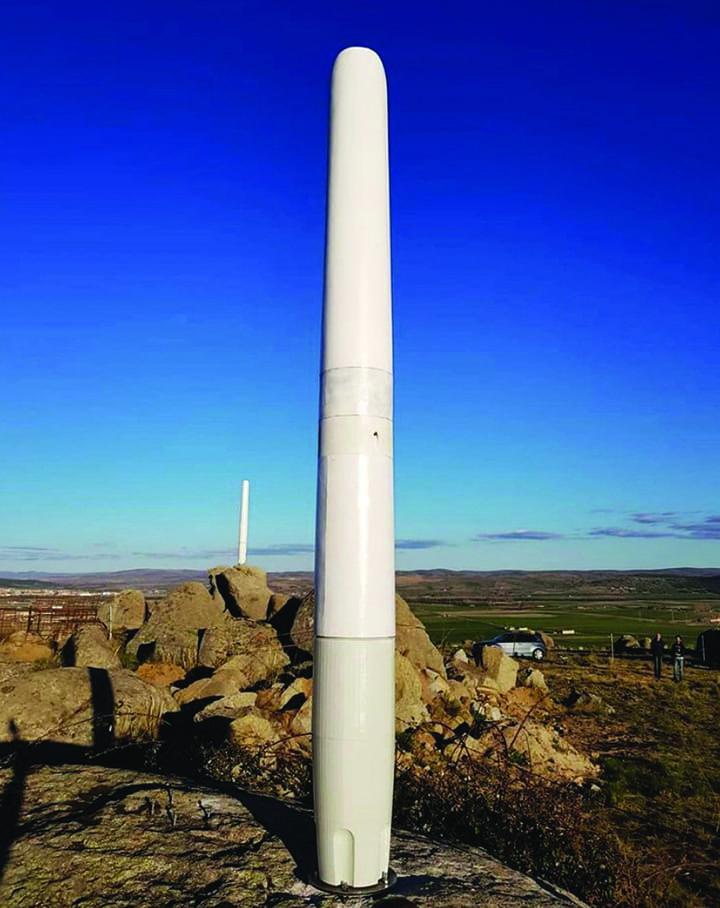 |
3. Vortex Bladeless is a vortex-induced vibration resonant wind generator that harnesses wind energy from a phenomenon of vorticity called vortex shedding. Courtesy: Vortex Bladeless |
Vortex Bladeless technology (Figure 3) is a silent vortex-induced vibration resonant wind generator" that harnesses wind energy from a phenomenon of vorticity called vortex shedding," it explained. Basically, bladeless technology consists of a cylinder fixed vertically with an elastic rod. The cylinder oscillates on a wind range, which then generates electricity through an alternator system. In other words, it is a wind turbine which is not actually a turbine," it said. Explained in fluid mechanics terms: As the wind passes through a blunt body, the flow is modified and generates a cyclical pattern of vortices. Once the frequency of these forces is close enough to the body's structural frequency, the body starts to oscillate and enters into resonance with the wind. This is also known as Vortex Induced Vibration (VIV)," it said.
Development on the turbine has been ongoing for at least three years, but the company has already installed field tests of its 2.75-meter-high 100-W Vortex Tacoma device. While a commercialization timeframe for that device is still uncertain, the company in 2021 manufactured about 100 units of an 85-centimeter-high version, the Vortex Nano, to distribute to universities, independent laboratories, municipalities, and parks around the world. The aim is to obtain measurements, study their behavior in different locations and types of installations, and generate metrics that will allow the devices to be improved and their long-term behavior to be understood according to the variables of the environment."
Vortex, however, is optimistic the larger Tacoma device will play a role in residential applications, much as low-power solar photovoltaics does today. It envisions installations of multiple devices in arrays or grids," noting the devices only need to be separated by a distance that is equivalent to half their height. The low-power market is an almost unexploited market for a wind technology like ours; which can give you little power but constant all year round even with weak or turbulent and very changeable winds, which requires almost no maintenance, which is safe and which represents a lower impact on the environment, visual, sound and on local fauna," it said.
New Heights for Airborne Wind EnergyMeanwhile, taking unconventional wind energy to another level-but soaring on investor interest-are concepts that fall within the airborne wind energy (AWE) category. According to Airborne Wind Europe-an association for the burgeoning subsector-AWE concepts are essentially based on flying blades or wings attached to the ground by a tether."
The concept relies on two main principles to turn wind energy into electricity-through mini-wind turbines and generators mounted on the flying wing, or by having the wing pull on the tether and having the tether unwind from a drum on the ground, which is driving the generator. This ground generation method requires reeling the tether back in, which leads to a pumping or yoyo' motion," it said.
The organization's members have marked notable collaborations with larger utilities over the past year. In February, German companies RWE Renewables GmbH and SkySails Power GmbH agreed to pilot a 200-kW project to fly a 120-square-meter kite up to 400 meters above ground to harness high-altitude winds for generating electricity. RWE Renewables will operate the SkySails Power system and evaluate the technology during the three-year pilot project. Currently, suitable locations in Germany are being assessed," the companies said.
And in April, Norwegian firm Kitemill AS said that after successful initial autonomous flights-in which its 30-kW technology proved its potential to generate energy-the company will further scale up the technology and plans to commercialize its first demo Kite park." Kitemill, which recently garnered a 1 million investment from En-Vision Europe Ltd., has also acquired all intellectual property rights from Scottish KPS, another AWE developer, as well as benefited from the information that Alphabet/Google released after they closed their company Makani."
Innovative Manufacturing and MaterialsBeyond new turbine concepts, research has also turned to focus on development of new materials that are easily mass-produced at a low cost. In the U.S., Oak Ridge National Laboratory and the National Renewable Energy Laboratory (NREL) are partnering with GE Research, GE Renewable Energy, and LM Wind Power to deliver a full-size 3D-printed blade tip that will be ready for structural testing. According to GE, the 25-month project that kicked off this February will focus on a low-cost thermoplastic skin coupled with printed reinforcement." NREL, which has spearheaded thermoplastic resin research, says that if combined with thermal welding techniques (also pioneered by collaborative partnerships led by NREL), the resins offer the potential for stronger, less-expensive, and longer wind turbine blades, increasing energy capture, decreasing energy and transportation costs, and increasing blade reliability-critical to advancing the wind energy market.
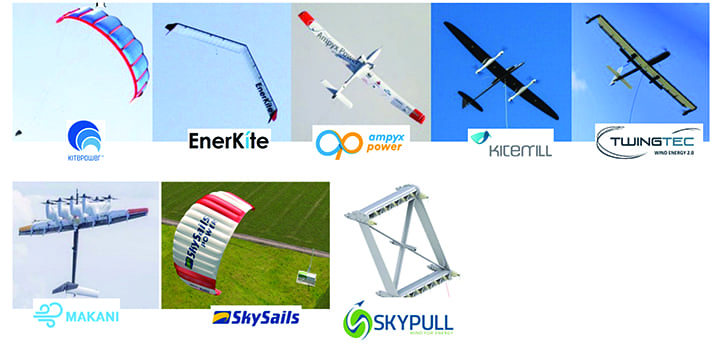 |
4. Examples of airborne wind energy (AWE) devices under development by members of the Airborne Wind Europe, a trade association for the technology subsection. Courtesy: Airborne Wind Europe |
The project's demonstration of automated 3D-printing processes for large-scale structural blade components could also be potentially game-changing for the design of larger rotors, both for onshore and offshore wind turbine technology, NREL has noted. The lab suggests that through disruptions" in labor, capital, and supply chain costs, 3D-printing of blade components could support competitive domestic onsite and modular manufacturing processes." That, in turn, could lead to potentially lower [levelized cost of energy (LCOE)] through highly optimized, supersized blade designs that bypass transportation and logistical constraints."
But the project's emphasis on thermoplastics is also notable because the emerging material could boost efforts to make wind turbine blades recyclable. As experts have noted, 85% to 90% of a wind turbine is recyclable, except for turbine blade material, which is typically made from thermoset composites.
Across the Atlantic, industry and academia are also looking to close that recycling gap. In May, a coalition of wind industry and academic leaders-including wind turbine manufacturer, Vestas, chlor-alkali leader Olin Corp., Aarhus University, and the Danish Technological Institute-launched a new initiative, Circular Economy for Thermosets Epoxy Composites (CETEC), to commercialize a thermoset epoxy composite material within three years. Developed with funding from the Danish government, the material is manufactured under a two-step process. First, thermoset composites are disassembled into fibre and epoxy. Secondly, through a novel chemcycling process, the epoxy is further broken up into base components similar to virgin materials," the companies said. These materials can then be reintroduced into the manufacturing of new turbine blades, constituting a new circularity pathway for epoxy resin."
The key characteristic of composite materials is their unique combination of low weight and high strength. This is governed by the strong bonding of two different materials-fibre and epoxy," explained Dr. Simon Frolich, team manager at the Danish Technological Institute. The dilemma is that this strong bond is also the feature that renders these materials difficult to recycle. Therefore, the development of CETEC's novel technology, enabling disassembly of the composite at end-of-life, is a gamechanger that will allow us to capture the value represented by each material stream in a new circular value chain," he said.
-Sonal Patelis POWER's senior associate editor.
The post Changing Winds: Emerging Wind Turbine Technologies appeared first on POWER Magazine.